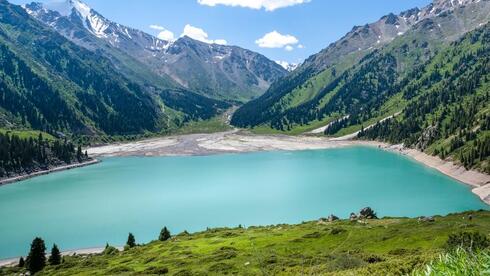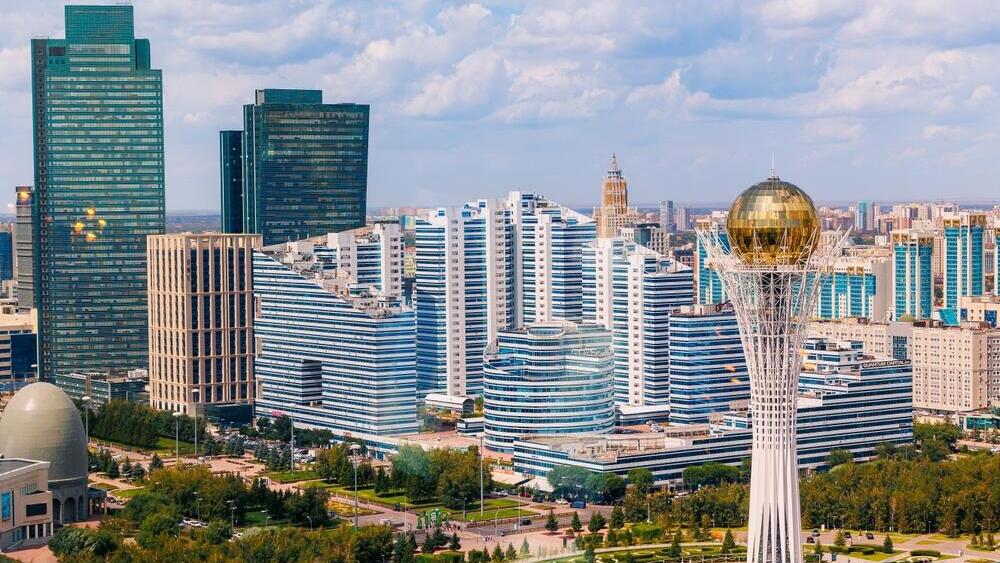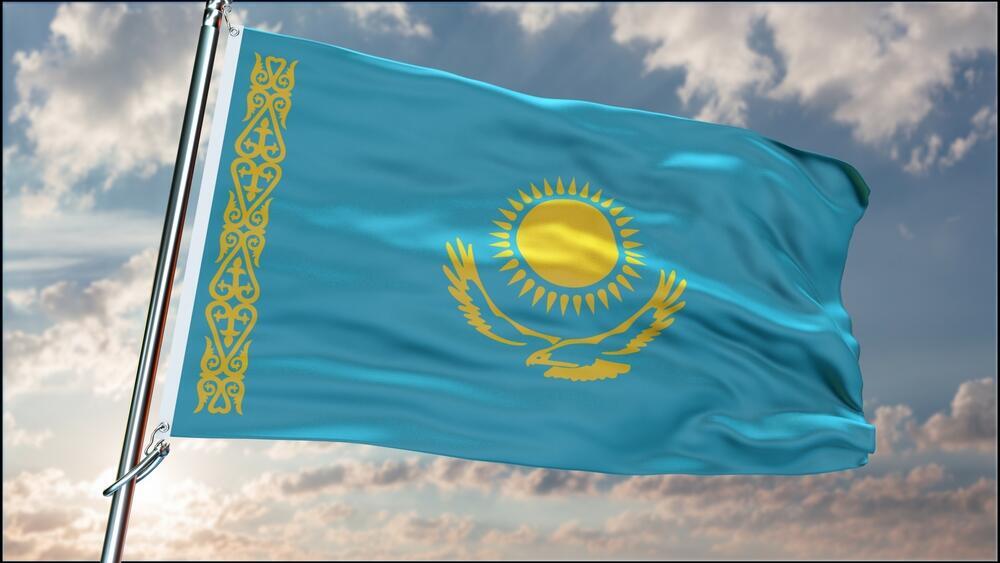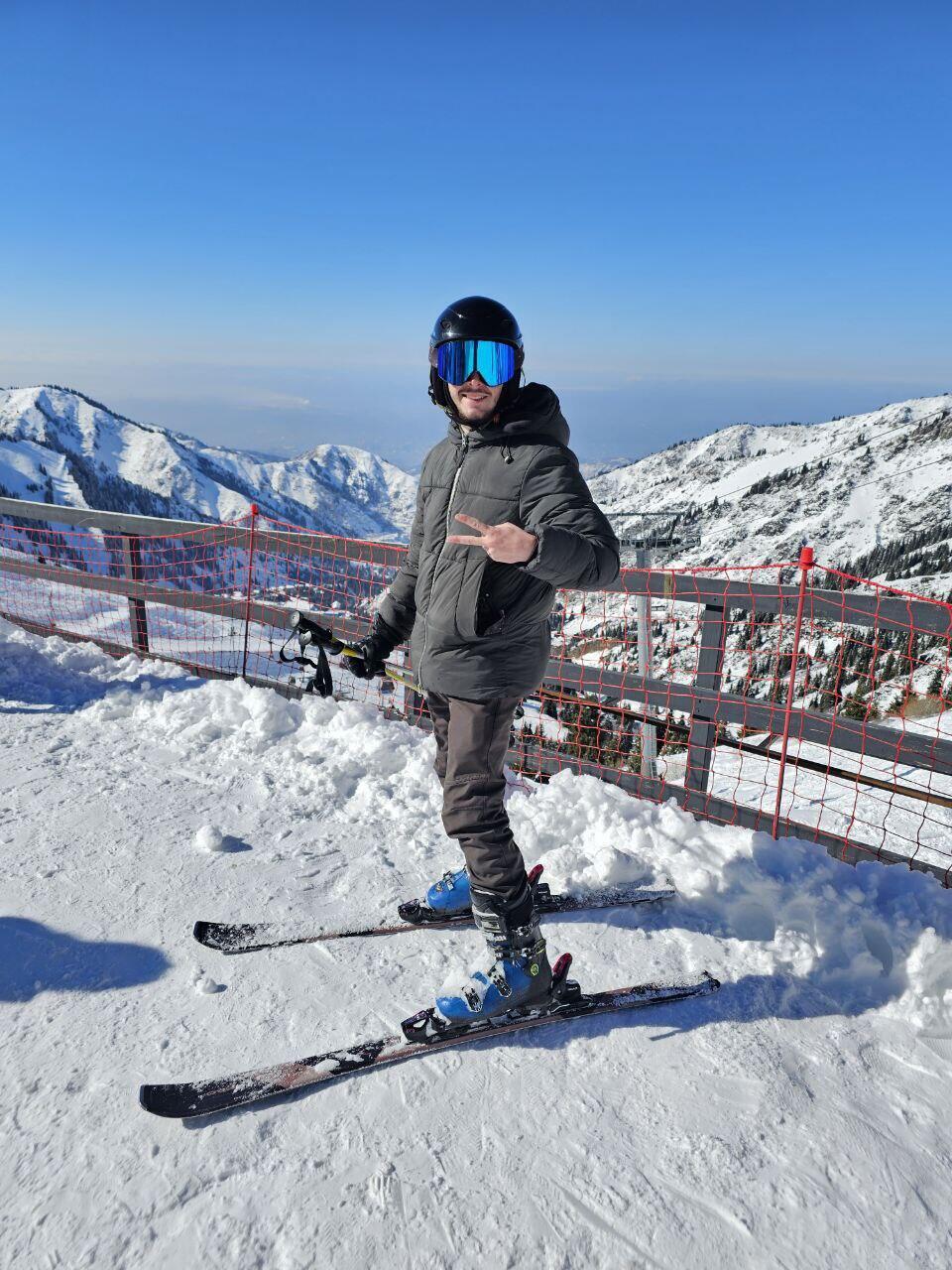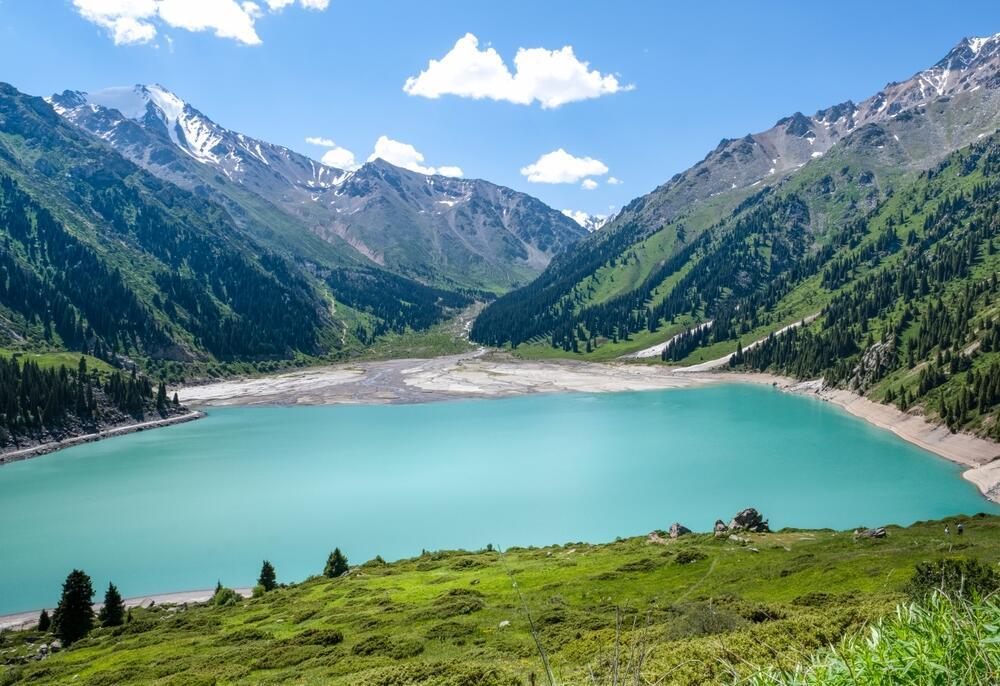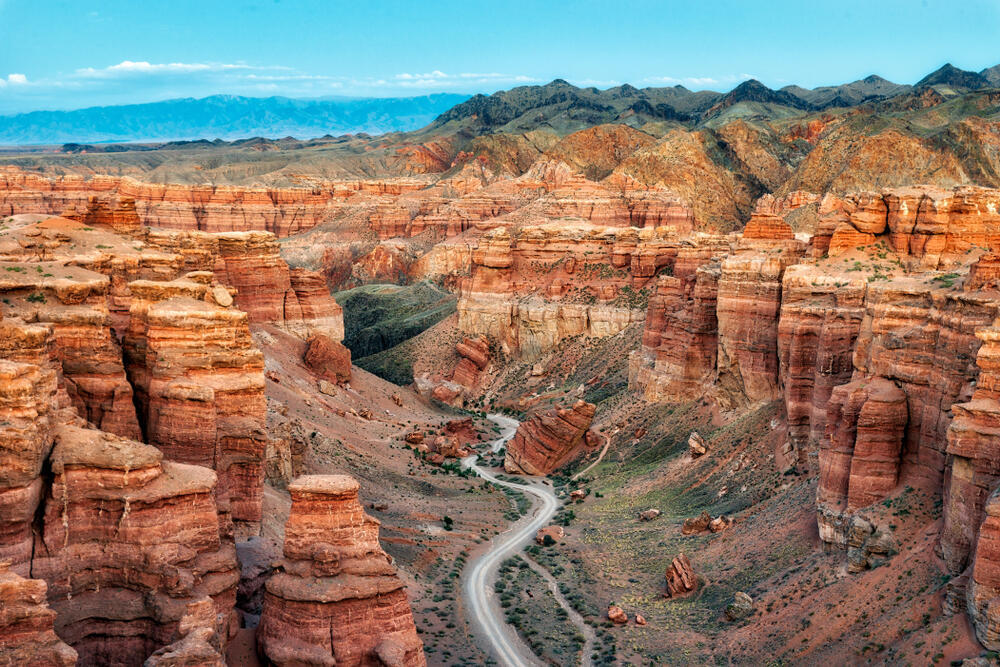Until two years ago, there was a direct flight from Tel Aviv to Almaty, Kazakhstan’s largest city. Now, with the Central Asian nation joining the Abraham Accords, it could become an intriguing new destination for Israeli travelers: snow-capped mountains with ski resorts, endless deserts, modern cities, and a completely different kind of travel experience — just six hours away by plane.
In a conversation with ynet Global, two travelers who recently visited the country share what Kazakhstan has to offer — and what Kazakhs really think of Israelis.
It’s no secret that for most Israelis, the word “Kazakhstan” doesn’t exactly spark a positive image. The “-stan” ending automatically brings to mind countries like Afghanistan or Iran — in other words, that part of the world Israelis typically try to avoid.
The film Borat, in turn, has played a major role in shaping the country’s distorted public image (granted, it’s one of the funnier movies out there — if you haven’t seen it, go watch it). In reality, Kazakhstan is a vast nation of 20 million people, modern, advanced, and home to a breathtaking variety of natural landscapes.
As a large Muslim-majority country that doesn’t border Israel and sits deep in the heart of Asia, Kazakhstan wasn’t seen as a natural part of the normalization map, mainly because few thought it was necessary. But now that it’s official, the agreement opens up exciting opportunities for travelers and ski lovers in search of new destinations. Kazakhstan presents itself as a moderate, modern, and fascinating country, located between Russia and China.
Until now, trips to the Far East usually passed through Dubai or Bangkok. Kazakhstan offers a new stopover on the way, and a destination in its own right.
There are currently no direct flights between Israel and Kazakhstan, but getting there is relatively simple. The most convenient route is via Dubai: a three-and-a-half-hour flight from Tel Aviv, followed by a direct daily flight to Kazakhstan’s capital, Astana, which takes about four hours and 40 minutes.
Kazakhstan previously operated a direct route to Israel, an Air Astana flight from Almaty to Tel Aviv that ran twice weekly from September 2023, but it was suspended after the outbreak of the October 7 war. With the new agreement in place, that route could soon return, cutting travel time to about six hours.
Avi Rosenfeld, 19, an Israeli who has already visited more than 50 countries, has been to Kazakhstan twice. Luca Pferdmenges, 24, the youngest person to travel to all 195 countries in the world, has also been there. Both agree: there’s a huge gap between Kazakhstan’s image and the reality on the ground.
What was your first impression when you arrived? Is it a country that’s easy to connect with?
“You land there, and it’s Central Asia; everything feels chaotic and cheap. Taxi drivers are grabbing your attention. But among all the countries in Central Asia, Kazakhstan is the most modern and organized,” Rosenfeld told Ynet. “Everything there is inexpensive, but also very modern.”
So you didn’t feel like you were in a third-world country?
“Not at all. The cities themselves are very modern and developed. Sure, there are some old Soviet-era buildings like you see across Eastern Europe, but overall, it’s an advanced and developed country. In the villages, it does feel like a different world; everything there is a bit flimsy.”
If you had to describe Kazakhstan in one or two words, what would they be?
“A cool country with tons to do. It’s one of the largest countries in the world, rich in natural resources and rare natural phenomena.”
9 View gallery


“I felt I was in Switzerland”. Luca Pferdmenges in Kazakhstan
(Photo: Luca Pferdmenges)
And the Kazakhs themselves, are they friendly? How do they treat tourists?
“Very friendly. They’re Muslim, but it’s a different style than what we’re used to — Asian Muslims. They’re respectful, welcoming, smiling, and try to help. The only issue is that many don’t speak English, but they’re still very kind and open.”
Did you tell anyone there that you’re from Israel?
“Of course, all the time. Even a cab driver from the airport — he didn’t quite know where Israel was at first, then remembered and said, ‘Palestine–Israel, there’s a war? Is everything okay there?’ We talked about it a bit, but it wasn’t a problem at all.”
So being Israeli wasn’t an issue for them?
“Not at all. Most of the population is Kazakh; they look Asian, with slanted eyes and a different way of speaking, but there are also many Russians who were exiled there during the Soviet era and stayed. The two official languages are Kazakh and Russian.”
Is it easy for tourists to get around, in terms of signage and accessibility?
“It’s a bit of an underrated country; there aren’t many tourists, but once you figure out how things work, it’s easy. In recent years, they’ve really invested in tourism, and it shows. Compared to most Central Asian countries, it’s quite modern. For me, it was much easier than other places in the region.”
If an Israeli tourist asked you whether it’s worth visiting there, what would you say?
“Absolutely worth it. It’s a cheap country with stunning landscapes and a real, authentic experience. It’s also underrated, so you won’t find crowds of tourists. You can stay at five-star hotels for ridiculously low prices compared to other countries.”
How was the culinary experience there? I’ve heard they eat a lot of horse meat.
“It’s not like you have to worry about every bite. There are horse meat dishes, and trying them could even be an experience, but I didn’t try any, for kosher reasons. There’s also plenty of regular food without horse. I had a funny story; I asked for a vegan burger and got a bun with just vegetables and no patty. The seller thought vegan just meant no meat at all. It was a funny moment due to a language barrier.”
9 View gallery


Beshbarmak the most popular Kazakh dish with cooked horse meat
(Photo: Hihitetlin / shutterstock)
Luca Pferdmenges, the youngest person to travel to all 195 countries in the world, remembers Kazakhstan as one of the biggest surprises of his journey. “It was one of the first countries I visited in Asia, and the experience there was amazing,” he said.
“The city of Almaty and the landscapes around it felt like a classic European winter, only at a fraction of the price, just a few dozen euros. During my visit, I went on a trip to the ‘Big Almaty Lake,’ which turns into a true winter wonderland during the colder months.”
“When I got there, I saw a frozen landscape, snow-covered mountains all around. I felt like I was in Switzerland, but I was actually in Kazakhstan, and I was only paying 20 euros for such an incredible experience. So yes — I’d say Kazakhstan is very, very, very tourist-friendly,” said Pferdmenges.
“It’s also one of those countries where people genuinely seem happy to see tourists. It’s not a big tourist destination, though in my opinion, it absolutely deserves to be. When you tell people you’re a tourist who came to see the beautiful places in Kazakhstan, they thank you. They truly appreciate the fact that someone came to visit.”
“If you’re into winter vacations, skiing, travelling to mountains, and lakes, Kazakhstan can compete with Switzerland and Austria. The scenery is stunning, and it’s much more affordable. I think it has tremendous potential to become a hot tourist destination.”
Astana, Kazakhstan’s capital, is one of the youngest cities in the world. It was built almost from scratch in the 1990s to establish a modern capital in the heart of the vast country, symbolizing Kazakhstan’s aspirations for independence, openness, and progress.
Located along the Ishim River, the city features futuristic architecture, wide boulevards, government institutions, and new commercial centers. Over the years, Astana underwent several name changes — from Astana to Nur-Sultan and back again — becoming a symbol of Kazakhstan’s evolving national identity. Today, it’s considered one of the most well-planned and cleanest cities in Central Asia, offering a modern urban experience in an unexpected location.
Among the city’s key landmarks are the Bayterek Tower, a 97-meter-high observation tower and symbol of the city offering panoramic skyline views; the Palace of Peace and Reconciliation, a glass-and-steel pyramid designed by architect Norman Foster that hosts cultural and interfaith gatherings; and Khan Shatyr, a massive transparent tent-shaped structure serving as a shopping and entertainment center for families.
Also in the city is the National Museum of Kazakhstan, one of the largest in Asia, featuring fascinating exhibits on local history, art, and culture. The mix of modern government institutions, unique architecture, and emerging cultural life makes Astana an extraordinary city, and a glimpse into the new Kazakhstan.
9 View gallery
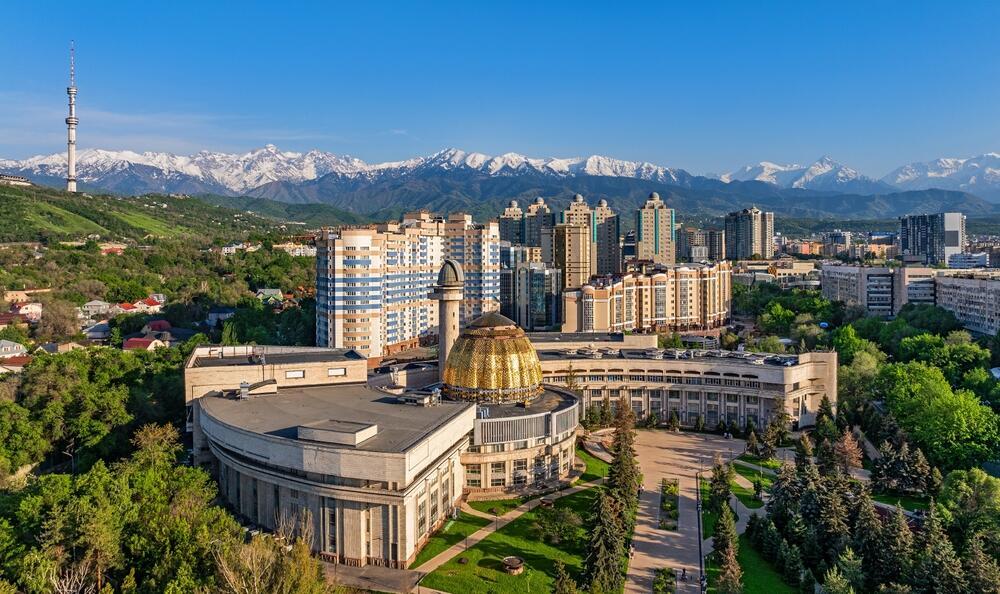

Drone view of the southeastern part of the city of Almaty
(Photo: MaxZolotukhin / shutterstock)
About a 20-hour drive from Astana is Almaty, the country’s largest city and former capital, still considered the cultural and economic heart of Kazakhstan. Nestled at the foot of the Tian Shan Mountains near the border of Kyrgyzstan, its skyline is open to snow-capped peaks visible from nearly every street. The city has broad, tree-lined avenues, plenty of parks, cafés, museums, and markets, and exudes a freer, more Western atmosphere than Astana.
At the center of the city is Panfilov Park and the Zenkov Russian Orthodox Cathedral, one of Almaty’s most photographed sites, alongside the Green Bazaar — a colorful food and spice market that appears in every travel guide to the city.
Other highlights include the First President’s Park, the botanical gardens, and the Museum of Folk Musical Instruments. Rising above the city is Kok Tobe Hill, accessible by cable car and offering sweeping views of Almaty. Just outside the city are Medeu, the highest ice-skating arena in the world, and Shymbulak, a major Central Asian ski resort that also operates in summer for scenic hikes and views.
Kazakhstan’s natural landscape is one of its most surprising features — far more diverse and powerful than many expect. In the country’s southeast, around the Tian Shan Mountains, you’ll find alpine scenery, forests, and mountain lakes such as Kolsai and Kaindy, considered among the most beautiful in Central Asia.
In the west and south, the landscape shifts to vast steppes and deserts, including parts of the Kyzylkum Desert (the “Red Sand”), which illustrates the transition from mountainous climate to the desert regions of Central Asia.
One of Kazakhstan’s most striking natural sites is the Charyn Canyon, often dubbed “Kazakhstan’s Grand Canyon.” Located a short drive from Almaty, it’s a must-see for anyone looking to explore towering rock walls and dramatic geological formations.
Combined with ski resorts, rivers, and deserts, Kazakhstan offers an almost surreal nature experience; a country where, within a few hours, you can go from snowy mountains to turquoise lakes, then to a rocky canyon or a golden desert.
